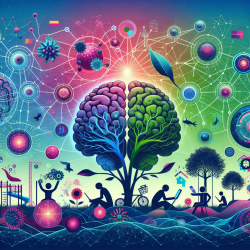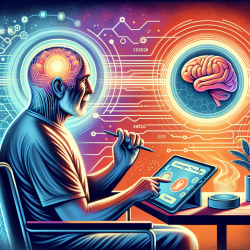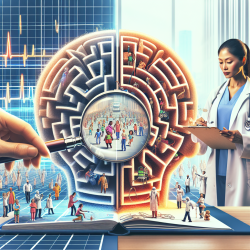Empowering Minds: Harnessing Environmental Enrichment for Enhanced Learning
In the quest to enhance learning and cognitive development, the concept of environmental enrichment (EE) emerges as a powerful tool. A recent study titled Bridging Neuroscience and AI: Environmental Enrichment as a Model for Forward Knowledge Transfer explores how EE can serve as a biological model to inspire advancements in artificial intelligence (AI) and improve educational outcomes. This blog delves into the key findings of the study and offers practical insights for practitioners seeking to enhance their skills and foster better learning environments for children.
Understanding Environmental Enrichment
Environmental enrichment refers to the enhancement of cognitive, social, motor, and sensory stimulation in an individual's environment. Originally studied in animals, EE has shown significant improvements in learning speed and performance on new tasks, a phenomenon known as forward transfer. The study suggests that EE can serve as a model for developing AI systems capable of rapid and efficient learning, akin to the human brain's natural ability to learn continuously.
Implications for Practitioners
Practitioners in the field of speech-language pathology and education can leverage the principles of EE to create enriched learning environments that promote cognitive development and learning efficiency. Here are some actionable strategies:
- Incorporate Multisensory Learning: Design activities that engage multiple senses, such as visual, auditory, and tactile, to enhance memory retention and understanding.
- Foster Social Interactions: Encourage group activities and peer interactions to build social skills and enhance cognitive flexibility.
- Promote Physical Activity: Integrate physical exercises that stimulate brain activity and improve focus and concentration.
- Provide Diverse Learning Materials: Use a variety of educational resources to cater to different learning styles and preferences.
Bridging Neuroscience and AI
The study highlights the potential of combining neuroscience insights with AI development to create systems that mimic human learning capabilities. By understanding the neural mechanisms underlying EE, researchers can develop AI models that exhibit forward transfer and continual learning. This synergy between neuroscience and AI holds promise for creating educational technologies that adapt to individual learning needs and improve learning outcomes.
Encouraging Further Research
While the study provides valuable insights, it also opens the door for further research. Practitioners and researchers are encouraged to explore the following areas:
- Investigate the specific neural changes induced by EE and their impact on learning and memory.
- Explore the application of EE principles in digital learning environments and AI-driven educational tools.
- Examine the long-term effects of EE on cognitive development and academic performance.
To read the original research paper, please follow this link: Bridging Neuroscience and AI: Environmental Enrichment as a Model for Forward Knowledge Transfer.










